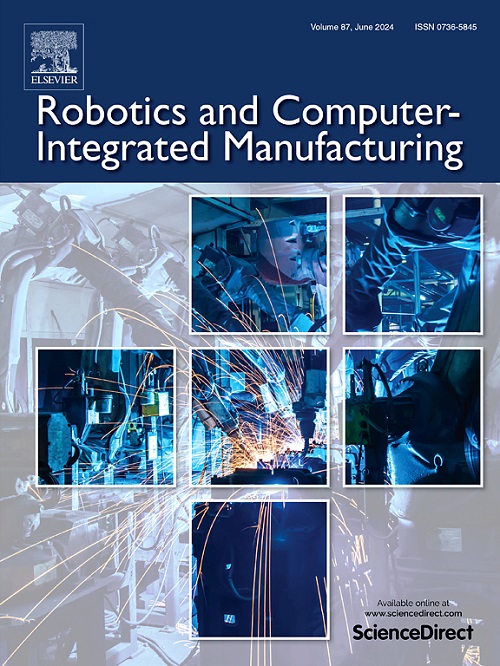ATD-GCN: A human activity recognition approach for human-robot collaboration based on adaptive skeleton tree-decomposition
IF 9.1
1区 计算机科学
Q1 COMPUTER SCIENCE, INTERDISCIPLINARY APPLICATIONS
引用次数: 0
Abstract
In contemporary intelligent manufacturing environments, scalability and flexibility have emerged as critical requirements for human-robot collaboration (HRC) systems. As the cornerstone of effective HRC implementations, human activity recognition (HAR) is indispensable for accurate understanding of human operational intent and improving HRC in dynamic industrial environments. Recently, graph convolutional networks (GCNs) based on skeleton data have become the most popular methods for HAR. Existing approaches frequently overlook the critical design of topology graphs and skeleton features, resulting in delayed responses and incorrect decisions in HRC systems. To address these challenges, we propose an adaptive human skeleton Tree-Decomposition approach (ATD-GCN). First, the Tree-Decomposition (TD) graph is defined by dividing skeleton nodes into levels with consistent semantic information, where adjacent levels are connected through three hierarchies. Second, we develop a Hierarchical Attention (HA) module to adaptively emphasize the dominant hierarchy within the TD graph. Furthermore, we apply 6DoF theory to the design of skeleton features and develop a multi-stream network integration strategy. Finally, we conduct comprehensive experiments on three datasets and validate the method in the HRC workshop. Experimental results show that our model achieves outstanding performance while remaining lightweight. The proposed ATD-GCN approach makes substantial contributions to HRC by enabling more responsive and adaptive robot behavior through enhanced HAR, thus advancing the development of human-centric smart manufacturing systems.
求助全文
约1分钟内获得全文
求助全文
来源期刊
CiteScore
24.10
自引率
13.50%
发文量
160
审稿时长
50 days
期刊介绍:
The journal, Robotics and Computer-Integrated Manufacturing, focuses on sharing research applications that contribute to the development of new or enhanced robotics, manufacturing technologies, and innovative manufacturing strategies that are relevant to industry. Papers that combine theory and experimental validation are preferred, while review papers on current robotics and manufacturing issues are also considered. However, papers on traditional machining processes, modeling and simulation, supply chain management, and resource optimization are generally not within the scope of the journal, as there are more appropriate journals for these topics. Similarly, papers that are overly theoretical or mathematical will be directed to other suitable journals. The journal welcomes original papers in areas such as industrial robotics, human-robot collaboration in manufacturing, cloud-based manufacturing, cyber-physical production systems, big data analytics in manufacturing, smart mechatronics, machine learning, adaptive and sustainable manufacturing, and other fields involving unique manufacturing technologies.

 求助内容:
求助内容: 应助结果提醒方式:
应助结果提醒方式:


